#zeeshan ayyub
Text

#harry potter#dumbledore#hermione granger#ron weasley#hogwarts#snape#voldemort#harry potter books#charms#potions#chhalang#technique#galat#inder mohan singh#meme#zeeshan ayyub
4 notes
·
View notes
Text
















ZERO (2018) — dir. Aanand L. Rai
#zero#aanand l. rai#screenwriter: himanshu sharma#srk#shah rukh khan#katrina kaif#anushka sharma#mohammed zeeshan ayyub#indian cinema#hindi film#caps#*
9 notes
·
View notes
Text
am i about to watch Vicky Kaushal in yet another Indian military film as soon as it drops on streaming bc i saw him in the trailer with the mustache acting his ass off????? yes
#film: sam bahadur#sam bahadur#vicky kaushal#sanya malhotra#fatima sana shaikh#neeraj kabi#govind namdev#mohammed zeeshan ayyub#bollywood#local gay watches Bollywood.txt#this is his second military film with a mustache (i think. hello Raazi) and his third over all (hello Uri: The Surgical Strike)#still mad af he didn't get his Academy Award for Sardar Udham (f*ck the board btw) but uh. i'm a simple person i see Vicky i click#i've seen most of his recent films as a result. need to get on the older ones but he has me in a chokehold what am i supposed to do#that man is a chameleon. he melts into his f*cking roles he ACTS#it's about the '71 conflict over Bangladesh so. will probably have propaganda on India's side but praying it will be watchable#+ it's a Meghna Gulzar directed film and i don't think i've ever hated anything she's put out. let this not be the one that changes things#the only thing f*cking me over is that the music was licensed to Zee so until they sort out their sh*t with Spotify i can't put it#in the Bollywood playlist. f*ck#edit: yelling we're getting two Vicky featured films in the same month who thought this through
18 notes
·
View notes
Photo
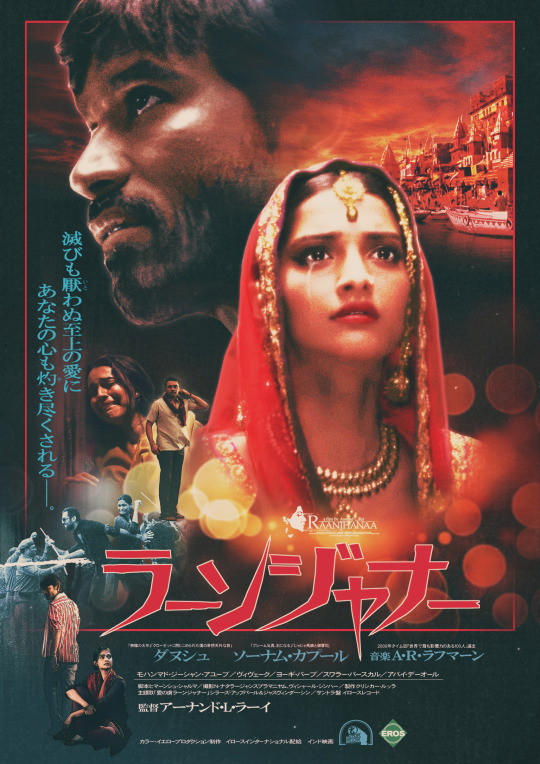
#raanjhanaa#dhanush#sonam kapoor#aanand l rai#mohd zeeshan ayyub#swara bhasker#abhay deol#hindi movie#hindi cinema#bollywood#bollywood movie#fan made poster#fanmade poster#alternative poster#movie poster#poster
18 notes
·
View notes
Text
Sam Bahadur
Sam Bahadur (2023)
#MeghnaGulzar #VickyKaushal #SanyaMalhotra #FatimaSanaShaikh #MohdZeeshanAyyub #NeerajKabi
Mehr auf:
Samबहादुर Jahr: 2023 (Dezember)
Genre: Biografie / Drama / Kriegsfilm
Regie: Meghna Gulzar
Hauptrollen: Vicky Kaushal, Sanya Malhotra, Fatima Sana Shaikh, Mohd. Zeeshan Ayyub, Neeraj Kabi, Naoya Ishida, Jaskaran Singh Gandhi, Edward Sonnenblick, Keita Arai, Richard Bhakti Klein, Rohan Verma, Krishnakant Singh Bundela, Sammy Jonas Heaney, Col Ravi Sharma …
Filmbeschreibung: Basierend auf dem…
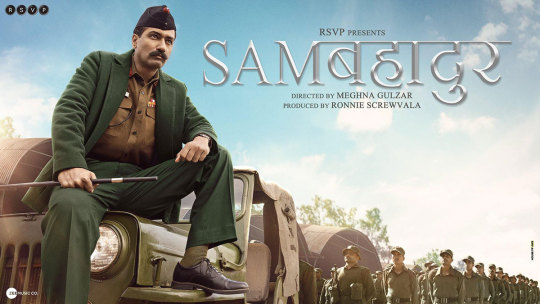
View On WordPress
0 notes
Text
Sinopsis Lengkap Film Tubelight (2017)
Sinopsis Tubelight (2017) – Drama keluarga dengan latar belakang kehidupan kota kecil di Selatan India. Menceritakan kecintaan seorang pria terhadap keluarganya dan keyakinan tak tergoyahkan terhadap dirinya sendiri. Sebuah kisah hangat tentang kekuatan perubahan di dalam berbuat kebajikan.
Detail Info
Judul film : Tubelight (2017)
Rilis : 23 Juni 2017
Negara : India
Bahasa : Hindi
Sutradara :…

View On WordPress
#Brijendra Kala#film India#Isha Talwar#Matin Rey Tangu#Mohammed Zeeshan Ayyub#Om Puri#Salman Khan#Shah Rukh Khan#Sohail Khan#Yashpal Sharma#Zhu Zhu
0 notes
Text
Review of ‘Haddi’: Nawazuddin Siddiqui and Anurag Kashyap Starrer Tries Marrying Masala-Myths and Artistry-Mastery and Results are Mixed
It is no less than remarkable that within this ‘good-went-evil-to avenge’ formulae, bone smuggling, highway crimes, double crosses and political maneuvering marry to the plot with ease. All these could have led to a chaos but, with immense help from actors and some good staged moments, all these lead to final duel which is a fitting conclusion. That pre-climax to climax stretch justifies…

View On WordPress
#Adamya Bhall#Akshat Ajay Sharma#Anurag Kashyap#Haddi#Ila Arun#Movie Review#Nawazuddin Siddiqui#Revenge#Saurabh Sachdeva#Transgender#Zee5#Zeeshan Ayyub Khan
0 notes
Link
Manoj Bajpayee, Mohd. Zeeshan Ayyub, Tannishtha Chatterjee, Rajshri Deshpande, Apurva Mahesh, Megha Mathur, Dhaniram Prajapati, Smita Tambe
#Manoj Bajpayee#Mohd. Zeeshan Ayyub#Tannishtha Chatterjee#Rajshri Deshpande#Apurva Mahesh#Megha Mathur#Dhaniram Prajapati#Smita Tambe
0 notes
Text
Scoop on Netflix - Bollywood Series Review
Currently streaming, #ScoopOnNetflix in a fabulous series and a must-see for anyone seeking greater insight into Indian society
Scoop, a Hindi language crime drama with 6 episodes, currently streaming on @Netflix, is directed by Hansal Mehta and Mrunmayee Lagoo and is produced by Sarita Patil and Dikssha Jyote Routray. The series based on senior crime journalist Jigna Vora’s real life, biographical memoir “Behind Bars in Byculla” tells the story of her being accused of murder of mid-day reporter, Jyotirmoy Dey, in…
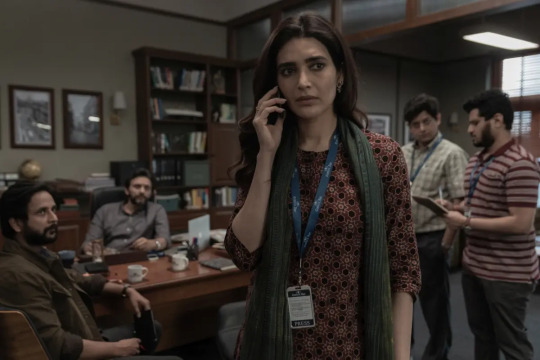
View On WordPress
#@Netflix#“Behind Bars in Byculla”#Dikssha Jyote Routray#Hansal Mehta#Jigna Vora#Jyotirmoy Dey#Karishma Tanna#Mohammed Zeeshan Ayyub#Mrunmayee Lagoo#Sarita Patil#Scoop
0 notes
Text
Anurag Kashyap reveals 'Sacred Games 3' has been shut down; says OTT doesn't have the guts after 'Tandav' controversy - Times of India
Anurag Kashyap’s last release was ‘Dobaaraa’ starring Taapsee Pannu. The filmmaker is gearing up for the release of its next which is a love story titled ‘Almost Pyaar With DJ Mohabbat’. The film stars Karan Mehta and Alaya F. While promoting his film, Anurag spoke about ‘Sacred Games’ as well in an interview with Mashable India. Anurag co-directed both the first and second seasons of the show,…

View On WordPress
0 notes
Text
In the summer of 2019, the actor Mohammed Zeeshan Ayyub won a role on “Tandav,” an Indian political drama being produced by Amazon Prime. The title was clever. In Hindu lore, the tandav is the dance of life and death performed by Shiva, the god whose terrible powers can end the universe—a neat metaphor for the dark, intricate maneuvers of national politics. When Ayyub read the show’s script, he spied a handful of allusions to the India around him. In one episode, policemen barge onto a university campus to arrest a Muslim student leader. The scene recalled the government’s persecution of popular student politicians and, more broadly, the hostility toward Muslims that marks the Hindu nationalism of Prime Minister Narendra Modi and his Bharatiya Janata Party (B.J.P.). The B.J.P. had just begun its second straight term in power, and “obviously, when you write, you write about recent things,” Ayyub said. Mostly, though, “Tandav” aspired to be splashy entertainment—the kind of show in which a Prime Minister dies after drinking a glass of poisoned wine, which happens in the opening episode. “In fact,” Ayyub said, “I even told the director, ‘If your main character breaks the fourth wall, you will have your “House of Cards.” ’ ”
Ayyub played another student leader, a tyro named Shiva Shekhar—not quite the main role, but a key one nevertheless, and a fillip to his career. A little more than a decade ago, Ayyub had been a floundering theatre actor in Delhi. “It took me four or five months, with great difficulty, to save enough money to buy a refrigerator,” he said. Then he moved to Mumbai and threw himself into its entertainment industry—into Bollywood, to use a term that many of its denizens dislike. Since then, Ayyub, now thirty-nine, has earned supporting parts both in blockbusters and in small, sparkling movies. He has a magnetic way of speaking Hindi, but he isn’t yet the sort of actor who is mobbed on the street. When we met, in June, he suggested not a luxury hotel or Soho House—the usual, discreet haunts of stars of a certain luminosity—but a café near his apartment complex. We sat outdoors, in sweaty, pre-monsoon weather, and Ayyub went through cigarettes and chili-cheese toast with the vim, if not the metabolism, of an undergraduate. After being cast in “Tandav,” Ayyub said with a laugh, he had to lose weight to look young enough to be Shiva Shekhar.
In the first scene that Ayyub shot, Shiva is onstage in a student skit, playing his namesake deity: a Shiva in a suit, newly risen from a cosmic nap, wondering how to be relevant once more. Tweet about something controversial, an accomplice proposes—something about how the university’s students, forever demanding azaadi, or freedom, from their government’s oppression, are “anti-nationals,” traitors to India. The audience chuckles; the B.J.P. rants in this vein so often that it has turned into a trope. But Shiva is surprised. How can a call for freedom be controversial? “Azaadi?” he exclaims. “What the . . . ?” The last word is drowned out by the shriek of mike feedback.
Like nudity and sex, profanity discomfits the average Indian film or television producer. This is especially true of those who make the quintessential Hindi movie—the song-and-dance melodrama, fit for all ages—but the instinct persists in those who aim to be edgier. When lawyers for Amazon Prime and an external law firm first reviewed “Tandav” ’s scripts—a customary procedure—Shiva’s line had been a full, florid “What the fuck?” One of the lawyers told me that his team had urged the showrunners to prune the expletive, but that there was more concern about “Tandav” coming off as anti-B.J.P. One character, the lawyer remembered, “was a politician depicted as a conservative, pushing for the privatization of education, which is one of the Modi government’s issues. We always said, Do it in a way where you can’t match the incidents onscreen to real incidents.” (Amazon broadly disputed this characterization.)
Drawing inspiration from bleak headlines—the religious lynchings, the cronyism, the autocratic acts of the state—had become a fraught enterprise. The B.J.P. and its supporters were growing intolerant of contrary views and criticism, and they were liable to react badly—through social-media attacks, targeted harassment by government agencies, or endless litigation. Outright violence was rarer, although its threat was never distant. “In the year or so before ‘Tandav,’ ” the lawyer said, “people were objecting to anything.”
When “Tandav” premièred, in January, 2021, Ayyub was on location, shooting a film. On Twitter, he noticed that he was being tagged frequently—sometimes by people praising him, but mostly amid heaps of abuse. In cities and towns far from Mumbai, people filed police complaints, claiming that the portrayal of a foulmouthed Shiva was an insult to Hinduism. (A B.J.P. official told me that, in the large family of Hindu-nationalist organizations, “an enthusiastic worker can always be found who will file these complaints to keep his bosses happy.”) Such cases usually go nowhere, but in the B.J.P.’s India, where the police and the courts are pliant, it’s hard to be sanguine. Recently, a Muslim journalist was imprisoned for three weeks because someone complained that a four-year-old tweet derided Hinduism. The account that reported him was anonymous, had one tweet and one follower on the day of the arrest, and went offline thereafter.
To be safe, Amazon cut the skit scene from “Tandav” a few days after the show began streaming. But the storm raged on. A senior B.J.P. leader wrote to Amazon, accusing its “ideologically motivated employees” of running “vicious programming.” Amazon petitioned India’s Supreme Court to protect the show’s director and producers from arrest while the cases were being heard; the Court refused to grant this reprieve. That felt unprecedented, Ayyub said, and it tipped everyone into a state of high alarm. An Amazon employee who worked on “Tandav” remembers how taxing the experience was. “It took over our days, nights, weeks, months,” he said. “And we were all working from home, because this was peak Covid. So I was on calls with the Amazon guys in the U.S. late night my time, early morning my time, because the company wanted to protect its employees.” All the discussions, he said, were about “how to keep our people safe”—but for a few months it really looked as if an Amazon executive might go to prison for green-lighting a cheesy TV show.
Filmmaking thrives in plenty of other cities in India, but “Bollywood” has become shorthand for Indian cinema as a whole, and for the thousand or so movies that the country releases annually. For nearly a century, Bollywood has also worn the warm, self-satisfied gloss of being a passion that unifies a country of divisions. Not only are its audiences as mixed as India itself, filmmakers will say, but Bollywood is a place where caste and religion don’t matter. The most piously presented proof of this is the fact that, in a Hindu-majority country, a Muslim man named Shah Rukh Khan has been the supreme box-office star for decades.
Even if Bollywood possesses this liberal fibre, the rightward swing in Indian politics has gnawed away at it. In Mumbai, people divide recent history into pre-“Tandav” and post-“Tandav” periods, reading the show’s fate—its bitter legal battles, its suspended second season—as a lesson in what can and cannot be said in Modi’s India. Their nervousness manifests in absurdities—in, for example, how Amazon Prime now discourages characters who share their names with Hindu deities—but also in decisions to put audacious film and TV projects into cold storage. Other filmmakers embrace genres that match the B.J.P.’s tastes: dubious historical epics that glorify bygone Hindu kings; action films about the Indian Army; political dramas and bio-pics, dutifully skewed. These productions all draw from the B.J.P.’s roster of stock villains: medieval Muslim rulers, Pakistan, Islamist terrorists, leftists, opposition parties like the Indian National Congress. Through Bollywood, India tells itself stories about itself. Many of those stories are now starkly different, in lockstep with the right wing’s bigotry.
Governments have tried to control Indian cinema in the past—mostly through the Central Board of Film Certification (C.B.F.C.), a state authority that can order alterations or essentially ban movies by refusing to certify them. But the B.J.P.’s disdain for Bollywood registers as something deeper—as an echo, in fact, of its animus toward the Congress and other rival parties. When Modi came to power, in 2014, he decried national politics as an élite club: upper-class, upper-caste, English-speaking politicians, activists, and journalists, all cozied up to one another in the plush pockets of central Delhi. In the eyes of the B.J.P., Bollywood, too, is full of liberals disconnected from the real India. And if the film industry is full of “nepo kids”—the children of actors, producers, and directors—then Rahul Gandhi, the Congress’s aspirant Prime Minister and the son, grandson, and great-grandson of earlier Prime Ministers, is the foremost nepo kid of all. “People like us—we’re hated,” the director Nikkhil Advani, the cousin and grand-nephew of producers, told me.
The B.J.P. began with small, typical political moves. In 2015, it appointed a B-movie actor, who was also a longtime Party member, to lead a prestigious, state-run filmmaking institute. When a C.B.F.C. chair quit, citing coercion by the government, she was replaced by Pahlaj Nihalani, a director who’d made a campaign video for Modi. Nihalani didn’t want any swearing in cinema—or violence, or sex, or, in one case, even the word “intercourse.” When Alankrita Shrivastava submitted her movie “Lipstick Under My Burkha” to the C.B.F.C., in 2016, “they refused point-blank to certify it,” she told me. In an industry known for writing larger-than-life characters, Shrivastava had told human-size, bittersweet stories about the desires of four women. The C.B.F.C., in a letter to the producers, objected to scenes of sexual intimacy, and to the “lady-oriented” plot. This hidebound reaction, Shrivastava told me, could have occurred under any government. Her point was that, back then, she was able to appeal to a tribunal, which certified the film for release. “It was frustrating and expensive, but at least there was a way of getting the decision reversed,” she said. Last year, the government abolished the tribunal. Now the only recourse available to censored filmmakers is litigation.
The B.J.P. exhibited another skill as well: an ability to whip up its base—its Internet bruisers, rank-and-file cadre, and ideological allies—into a frenzy so coördinated that it came to resemble popular sentiment. When Aamir Khan, the versatile star of several of Bollywood’s highest-grossing films, admitted, in 2015, that he was worried about growing intolerance in India, a social-media backlash began against Snapdeal, an e-commerce platform that Khan had endorsed on billboards and in TV spots. Within months, Snapdeal decided not to renew his contract; even this year, Khan pleaded with audiences not to spurn a new film because of his past remarks. In 2020, one director told me, an actor friend was put through the wringer of a boycott campaign on Twitter. “When I saw that, I went and deleted all my posts about politics,” he said. “I had a film coming out, and they’d have definitely used my tweets against it.”
Ignoring the mob felt increasingly unwise. In 2016, Sanjay Leela Bhansali—a reserved, bearded director known for maximalist costume dramas—started making “Padmaavat.” Bhansali was dramatizing a legend: the story of Padmavati, a Hindu queen from the Rajput caste, who is so renowned for her beauty that Alauddin Khilji, the Sultan of Delhi, attacks her husband’s kingdom to abduct her. Bhansali shot “Padmaavat” with his usual grandiosity: cavernous palaces, scenes teeming with extras, rich palettes of fabric. Toward the end, Padmavati and her handmaidens are besieged by Khilji’s army. Instead of submitting, they dress in red and stream through the palace, like blood through an artery, to leap into a pit of fire—a happy ending, in the moral universe of the Hindu right. Khilji is portrayed as half-mad, lustful, and a committed carnivore, stereotypes of the Indian Muslim brought to life.
Before the film’s release, though, a rumor leaked of a love scene between Padmavati and Khilji. This, it appeared, was too great a slight against Hindu honor. A B.J.P. politician announced a reward for beheading Deepika Padukone, who played Padmavati. A posse of young, angry Rajput men stormed onto the film’s set, found Bhansali, and roughed him up; then they destroyed film equipment and, in a later incident, burned down part of the set. According to Bhansali, he had to finish shooting “Padmaavat” under the protection of fifty-two policemen. “At one point, I thought, Enough. Change my profession. I can’t make films anymore,” he said later.
The B.J.P. often ascribes these events to fringe elements or faceless Hindu “patriots.” But the number of such incidents makes filmmakers assume that they’re seeing a bigger transformation, in which the average member of their audience now truly likes everything the B.J.P. likes, and abhors everything it abhors. For anyone with hundreds of millions of rupees riding on a movie, a director of lavish blockbusters said, these are tectonic confusions. “When someone thinks of a movie idea—not just me but other people who think of themselves as liberals—they think, Is it O.K. if my hero is a Muslim?” he told me. “But the darker question is: Is there even an audience out there for this kind of movie?”
“The Kashmir Files” has proved particularly vexing. Released earlier this year, the movie purports to be based on true events: the brutal eviction, beginning in 1989, of tens of thousands of Hindus from the Muslim-majority valley of Kashmir. At least two hundred Hindus were killed, according to government data, but the movie inflates the number to four thousand. Armed insurgents were responsible, but, implicitly or explicitly, the film blames many others for enabling the tragedy and for lying about it afterward. Unsurprisingly, they include some of the B.J.P.’s pet antagonists: leftist university professors, the Congress. “The Kashmir Files” has already triggered a riot, and one B.J.P. leader given to casual calls to shoot “anti-nationals” urged his Twitter followers to watch the film “so that there is no Bengal Files, Kerala Files, Delhi Files tomorrow.” Modi praised the film as another bursting of the liberal bubble; B.J.P. leaders distributed free tickets. After “The Kashmir Files” became one of the highest-grossing releases of 2022, Nikkhil Advani told me, filmmakers naturally wondered if this was the kind of thing people want to watch. “Now that it has worked,” he said sardonically, “let’s all make this kind of nationalistic, jingoistic cinema.”
In Mumbai, the quotient of Bollywood celebrity is highest in Bandra, a western suburb shaped like a piece in a jigsaw puzzle. The stars who appear elsewhere in the city on movie posters reside here, amid narrow, winding roads, weathered Portuguese churches, and chic bars that they can never visit. Salman Khan, an actor who has spent most of his career playing a square slab of muscle, lives in the same apartment building where he and his two brothers—both actors now—grew up. Not far away, the actors Kareena Kapoor and Saif Ali Khan, the children of stars themselves, occupy several floors of an apartment block. The drivers of Mumbai’s black-and-yellow taxis ritually point out these landmarks as they pass by.
Mumbai’s worst-kept secret lay a few doors from my hotel, down a road facing the sea. Shah Rukh Khan lives with his family in a villa the size of a small hotel, set back from a pair of heavy gates. Above a wall surrounding the compound, Khan has erected a black metal fence with a platform, where he sometimes materializes, in sunglasses, to greet the fans thronging the sidewalk to glimpse him. The pavement is never empty; even late at night, returning to my hotel, I’d see a few straggling devotees taking selfies, talking quietly, or just gazing at Khan’s house in the dark. In those moments, nothing demarcated the gulf between their worlds—between fan and celebrity, outsider and insider—more vividly than the black metal fence.
One morning, a man with a polite mustache joined me at my hotel for breakfast. Once a consummate outsider, he is now trying to become a new kind of insider. I’ll call him Ramesh, because although he belongs to the Rashtriya Swayamsevak Sangh, the mother ship of the B.J.P. and other Hindu-nationalist groups, he was keen to stress that he was meeting me in a personal capacity. The R.S.S., a volunteer organization that’s nearly a hundred years old, isn’t a political party. It’s the custodian of a belief that India is, first and foremost, a land for Hindus; it aspires so much to a literally muscular Hinduism that its members often receive paramilitary training. Mahatma Gandhi’s assassin was once a proud R.S.S. man. Modi joined the R.S.S. when he was young, as did many other B.J.P. leaders. Ramesh denied, though, that the R.S.S. wields any undue influence over the government. “It’s like there’s a college—let’s say, Harvard,” he said. “A hundred students of Harvard become senators in the U.S. Now, every time they go to their professors to ask something, would you say Harvard runs the government?” He framed this as a rhetorical question, but I suspect that we had different answers in mind.
In 2019, the R.S.S. formed a media unit in Mumbai, ostensibly to liaise not just with the film industry but also with journalists, the music business, and other trades. Ramesh cherishes this work. He’d come to Mumbai the previous year, from a town in southern India, where he’d grown up as a film buff. He still remembers the first movie he watched with his father in the cinema, when he was four years old: a pulpy mystery called “Hatya,” or “Murder,” dreadfully inappropriate for his age. In scrupulous daily accounts of expenditures, his father used to include the title of every film he’d watched, along with the price of the ticket. “I still have the list of hundreds of movies that we’ve seen,” Ramesh said.
Ramesh’s work with the R.S.S. involves many meetings—often half a dozen a day, with directors, producers, writers, and studio executives around Mumbai. He solicits these on WhatsApp. (A director sent me screenshots of one of Ramesh’s texts: “Your debut film was an internationally acclaimed movie and also won several awards here. . . . We would love to meet you for an informal interaction at your convenience & comfort.”) Ramesh’s mission, he said, is to nudge filmmakers toward subjects close to the R.S.S.’s heart. He wouldn’t care for a drama about conflict between Hindu castes, for instance: “Look at the great history of this country—and what do we show? We show all bad things.” But conflict in itself is not a problem. He often suggests tales of India’s military and intelligence agencies, or stories about the battles won by Hindu kings. He told me about a seventeenth-century Hindu general who, according to legend, held a pass against a Muslim king’s army with the help of just a few hundred troops—“you know, like ‘300.’ ” That would make for an excellent movie, Ramesh said, because it would encourage people to feel good about India. “Every story should end sukaant—that is, happy.”
Happy endings are relative, though. If a film conforms to the R.S.S.’s vision of India, Ramesh excuses any manipulations of fact; if it departs from that vision, Ramesh believes that its creators seek to “tarnish” India’s image. He cited “The Empire,” a show on Disney’s Indian platform, about Babur, the Muslim warrior who founded the Mughal dynasty in India, in 1526. Why make a show that humanizes Babur, Ramesh wondered. He doesn’t consider Muslim rulers to be Indian, even if they were born in the country. “They were invaders,” he said. “Sacred Games,” a noirish Netflix series, depicted a Hindu man plotting an act of terrorism. Ramesh thought that it was propaganda: “You want to show Hindus as terrorists because you don’t want to acknowledge Islamic terrorism.” “Tandav”? Also propaganda. But he forgives directors who invert history, depicting Hindu kings defeating their Muslim foes in battles that they actually lost. “You have to show something that will inspire people,” he said. And when I asked him about “The Kashmir Files”—about how brazenly polarizing it was, how its tenor was far from sukaant—he claimed unflappably that it was all fact. “You should know the history,” he said.
The B.J.P. likes to attribute its success to a Hindu awakening. Ramesh, similarly, thinks that Bollywood would be wise to heed a newly aware public that will brook no offense. If Amazon feels daunted by the lawsuits against “Tandav”—if it feels compelled to make shows and movies for Hindu partisans—that doesn’t worry Ramesh: “They must be happy that we do court cases. We don’t go and destroy their buildings.” His own efforts to set Bollywood right were minor, but they represented the importance that the R.S.S. vests in cinema. “We recognize that this is the most powerful medium, which controls minds, which influences the opinions of people,” he said. “A film is a mirror of society,” he went on—a tired, tedious idea, although it struck me that the Hindu right, to obtain the precise reflection it wants, is recasting not just society but also the mirror itself.
The writer Saadat Hasan Manto, who crafted some of the darkest, funniest short stories of the twentieth century, once adored the cinema, sometimes watching three films a day. In the late nineteen-forties, just before the British Raj ended, Manto joined Bombay Talkies, the first great Indian studio. The subcontinent was bloodily being pulled apart into India and Pakistan. “Hindu-Muslim riots had begun,” Manto wrote later, “and as wickets fall in cricket matches, so were people dying.” In these precarious times, one of the studio’s heads, Savak Vacha, a Parsi, set about reorganizing Bombay Talkies, promoting several employees who, like Manto, happened to be Muslim. “Vacha began to receive hate mail,” Manto wrote. “He was told that if he did not get rid of the Muslims, the studio would be set on fire.” Manto felt responsible; how would he face his colleagues if the studio were visited by violence? His friend Ashok Kumar, Bollywood’s earliest superstar, tried to reassure him. “ ‘Manto, this is madness. . . . It will go away,’ ” Manto recalled him saying. “However, it never went away, this madness. Instead, as time passed, it became more and more virulent.”
There was, perhaps, never a prelapsarian India—an India resounding with religious harmony—but “in many ways Bollywood, in its beginning, was one of the most cosmopolitan employers,” Debashree Mukherjee, a scholar of South Asian cinema at Columbia University, told me. In part, this was a political alignment with freedom fighters like Mahatma Gandhi and Jawaharlal Nehru, who wanted India to be a plural country. But it was also born out of necessity, Mukherjee said, because the movie industry was created as a patchwork of many other trades. “Some of the earliest financing came from Gujarati Muslims, and some of the earliest writers were from the Parsi theatre scene,” she said. Lyricists wrote songs in Urdu, a language inflected with Arabic and Persian and fostered by Muslim nobles as a medium of high culture. On a set, the dress dada might be a Hindu tailor and the art dada a Muslim painter. “The workforce was diverse, which remains the case today,” Mukherjee said.
Onscreen, Indian Muslims tended to be typecast, but in mainstream Bollywood this wasn’t so unusual: every character tended to be typecast. When Muslims led the story, they often figured as Mughal nobles, as courtesans, or as players in what the film scholar Ira Bhaskar calls the “Muslim social,” in which older, feudal ways of life tilted at the twentieth century. The stock of secondary roles included the benevolent Muslim elder (Khan Chacha, or Khan Uncle), the soulful poet or composer, and the best friend.
The Muslim type appeared even in “Amar Akbar Anthony” (1977), a landmark film that enshrined the ideal of religious tolerance. “Amar Akbar Anthony” is unabashed Bollywood—long and exuberant, with a baroque plot and half a dozen musical numbers. Three brothers, separated in childhood, are adopted into different faiths, and grow up to be the film’s dashing heroes, each neatly falling in love with a woman from his own religion. The movie’s conclusion is never in doubt. Its energy springs instead from the question of how its various ends are obtained: how the brothers realize that they’re brothers, how they find their long-lost parents, how they win their women, how they defeat a crime lord who has tried to destroy their family. The film ends in a joyful, syncretic reunion—the Nehruvian nation transposed onto the family in the clearest possible fashion. In this idyll, Akbar, the Muslim brother, could have clerked in a bank or run a magazine; instead, he sings Urdu qawwalis, and his love life is its own little Muslim social.
“It’s only in the late nineteen-eighties, and really with greater and greater frequency in the nineteen-nineties, that mainstream films start showing Muslims as gangsters, smugglers, and then terrorists,” Bhaskar said. Not by coincidence, she pointed out, these were also the decades when the B.J.P. grew as an electoral force. In 1992, after calling for the destruction of a mosque in the temple town of Ayodhya, B.J.P. and R.S.S. leaders watched as their followers tore the building down in a matter of hours. The demolition ignited riots, ushering India toward its present condition of chronic, quivering polarization. In 2010, Bhaskar met the director Yash Chopra, who had made many staunchly secular movies between the sixties and the eighties. “We couldn’t make those kinds of films today,” he told her. The plural ideal had withered too much. “Back then, we had faith in it.”
But perhaps it has been a mistake to regard cinema as a moral compass, to treat it as anything other than what it is: a machine to make money by pleasing as many people as possible. “Some of the criticism that Bollywood is frivolous or misogynistic has come from the well-meaning liberal left, which looked down upon the form,” Nandini Ramnath, a film critic for the Indian news Web site Scroll.in, told me. Ramnath believes that Bollywood’s prime confection—the family entertainment—appeals to audiences not despite its vanilla universality but because of it. “If the left was anxious that such films weren’t prescriptive enough or noble enough—well, now the right wants films to be prescriptive in its own way,” she said. The leaders of the B.J.P. are “brilliant at creating the impression that they’re omniscient and omnipotent,” she added. “And I think the clearest signal is: think twice before you say or do anything, because you don’t know who it’s going to offend, and you can assume it’s going to offend us.”
In Bollywood taxonomy, the director Dibakar Banerjee makes “gentry films”—films for people whom the industry regards as the “thinking public, classy folks,” Ramnath told me. (A second kind, she said, are “mass pictures”—movies for everyone.) Banerjee’s sly, charming début, “Khosla Ka Ghosla,” or “Khosla’s Nest” (2006), featured a young engineer who postpones his plans to immigrate to the U.S. so that he can thwart a local don’s schemes to annex his family’s land. Another movie, “Shanghai” (2012), which kicks off with a deadly attack on a leftist academic, is broadly inspired by Vassilis Vassilikos’s novel “Z.” Banerjee, who is fifty-two, waited out much of the pandemic with his family in their house in the Himalayan foothills. On Zoom, he tends to stare into the distance and gather his thoughts before answering a question, a habit that often made me think the image had frozen. Then he’d slap at a mosquito on his arm, and I’d know he was still online.
In 2017, Banerjee felt an itch. He’d been reading with horror about the lynchings of Muslims and about the murder of a journalist named Gauri Lankesh, all at the hands of Hindu extremists. This was, he said, “a special eruption of the poison”—and yet much of the country seemed not to sense its dreadful import. “The middle class was aware only of a daily, ubiquitous ‘othering’ of people in our lives,” he said. “I really wanted to make a film about it.” The following year, Banerjee signed a contract with Netflix, for a movie tentatively called “Freedom,” and shot the bulk of it in the course of thirty-six days at the beginning of 2020, largely in Mumbai. “We had another five days of exterior sequences left, but that didn’t happen, because the Indian lockdown started,” he said.
Earlier this year, Banerjee sent me a Vimeo link to his finished film, which confronts the bigotry infecting India. Banerjee approaches his theme slowly and sideways, through the story of one Muslim family. The family’s first generation, living in Kashmir during the unrest in 1990, finds itself sundered from its Hindu friends. In the second generation, a young woman wants to buy an apartment in present-day Mumbai, but no one will sell to her. (Muslims in Indian cities commonly struggle to find places to live, a form of discrimination practiced by Hindu homeowners and residents’ societies.) In 2042, the woman’s son, a novelist, lives in an even more ghettoized Delhi—a geofenced city where the state machinery determines what people can do based on their social-credit score. The wretchedness of this future spills out of the movie; later, I seemed to remember every frame as being gloomy and grim, even though several scenes are brightly lit. “We’ve lived through enough history to understand what’s going on now,” Banerjee said. “Now we can extrapolate, which is what my film does.”
During the years that Banerjee wrote and shot his movie, the takeover of Bollywood quickened. By 2019—an election year—new power brokers had emerged in the industry, seemingly from nowhere. One of them, the son of a legislator allied with the B.J.P., directed “The Accidental Prime Minister,” which pilloried the Congress leader who had governed India before Modi. (“It felt like propaganda even as I was making it,” Arjun Mathur, one of the film’s actors, told me. “I really regret doing it.”) Another produced a fawning bio-pic of Modi. One director told me about Mahaveer Jain, a producer who “was a nobody” but who now partners with some of Bollywood’s biggest studios and filmmakers. Jain, who said that he couldn’t meet me because he was unwell, is often described as the B.J.P.’s chief Bollywood liaison. In January, 2019, he helped choreograph a meeting between Modi and a band of A-listers, which yielded a selfie that blazed through the Indian Internet. Conspicuously, not one person in the photo was Muslim.
Sometimes there are more deliberate flexes of muscle. In the summer of 2020, under the pretext of probing an actor’s suicide, federal authorities launched an investigation into the drug habits of some of Mumbai’s most famous stars. Among them was Karan Johar, the city’s most influential filmmaker—a director who runs a sprawling production firm, a TV host who jokes on his talk show with his Bollywood friends, and, as the son and the nephew of famous producers, a twenty-four-karat nepo kid. Kshitij Prasad, a young executive producer who was then with Johar’s company, was called in for questioning, and he later said that the officers seemed keen to pin something—anything—on Johar or on another celebrity. “They kept insisting I was supplying drugs to the industry,” Prasad said. (The investigating agency has denied Prasad’s version of events.) When Prasad refused to coöperate, he was sent to prison for ninety days, then released on bail. The threat of a tax raid has also become a weapon, one director told me. When he was raided himself, investigators noticed that he’d been donating small monthly sums to news sites like Scroll and the Wire, which often criticize the government. “They said, ‘Don’t contribute to any of these publications,’ ” he said. “So I had to stop.”
Even these events, though, were reduced to mere prologue last October, when drug inspectors arrested Aryan Khan, the twenty-three-year-old son of Shah Rukh Khan. A team of agents, under the orders of the same officer who’d imprisoned Prasad, stopped Aryan in a Mumbai port terminal, where he was preparing to attend a party aboard a cruise ship. The agents found no drugs on him, yet they held him in jail for nearly a month before allowing him bail. Earlier this summer, they dropped all charges against him—which made it impossible not to speculate about what had happened. Had a government agency really imprisoned Aryan Khan without proof, as pure intimidation? Shah Rukh Khan said little during those weeks. The rest of Bollywood, meanwhile, absorbed the news as the most cautionary tale of all: if they could do this to the king, imagine what they could do to us.
By mid-2021, after a series of lockdowns, Banerjee had finished postproduction on his generational drama. Like a punctilious gardener, he’d offered to trim some of the movie’s nettles himself, unwilling to have Netflix stung more than necessary. (According to an internal memo, these changes included cutting images of the Indian flag. The memo also suggested, “In one of the shots, one person is walking in the background during National Anthem—remove that person.”) Toward the end of 2021, after Banerjee showed Netflix the film, something shifted. “There’d been a discussion about releasing the film in late 2022,” he said. “But an executive told us that they couldn’t commit to a release plan.” (Netflix denied this characterization.) The government had issued new guidelines for streaming platforms, obliging them, for instance, to pull a show or a movie within thirty-six hours if a court or a state agency ordered it. As Netflix kept dithering, Banerjee felt that he had just a few options left. “Wait indefinitely for the release to happen, or look for a producer who has the interest to release it in India—for the audience that I meant it primarily for—or look for a producer who doesn’t release it in India but releases it everywhere else,” he said. That last possibility was “very, very horrible—but what choice do I have?”
Banerjee’s film joins a growing trove of content that studios and filmmakers are reluctant to air. One director told me that he’d shot a love story about a couple who run away from home to be together. No one wants to release the film, he said, because “it just so happens that the boy is Muslim and the girl is Hindu.” According to two sources, a miniseries based on “Maximum City,” the popular nonfiction book that recounts Mumbai’s religious riots in 1992, has been frozen. (The production company denied this.) “Takht,” a Karan Johar extravaganza set in the Mughal period, began gestating around 2018. Two people who worked on the film described it as a celebration of secular values—which, they suspect, is partly why it’s effectively comatose. (Last year, Johar denied that he has abandoned the project.) Nikkhil Advani, who made the series about Babur, told me that he’d never experienced any censorship himself. But when I asked if he’d planned a season on Humayun, the second Mughal emperor of India, he said, “I had, but it’s not going to happen.” Humayun had waged persistent war against Hindu kings, but Advani found it dull to compose him in the shrill key of the bloodthirsty Muslim. And although there were other obstacles—the first season’s wan performance, rights issues with a source book—Advani knew that a humanized Humayun wasn’t worth pitching to any platform. “There’s no way they will allow me to make this,” he said.
More than once, I heard filmmakers liken their circumstances to those of their Iranian counterparts—in a tone that was plaintive but also, I thought, a little wistful, as if they hoped that these travails would burnish their artistic cachet. An ex-Amazon Prime executive classified the dismay over shelved projects as “whiplash—from writers and directors who assumed streaming platforms would give them the freedom and funds to tell whatever stories they wanted, without any checks and balances. If these people are just going to roll over and die, they don’t have the right to bitch to you about it.” A former executive at another streaming service described many of these filmmakers as people “who’ve never been in a room where someone else is more important than them,” and said that the recent encounters with political might were mere jolts to that privilege.
But that wasn’t necessarily a refutation of the belief, harbored by so many writers, directors, and producers, that their work was being iced because of its politics. In a conversation with a former Netflix employee, I asked why Banerjee’s film had suddenly stalled. “There’s a huge sense of fear,” the employee admitted. “No one wants to take the political risk of releasing a project like that.”
In contrast, Bollywood is glutted with movies and TV shows that align with the B.J.P.’s politics. There’s a series on a 2019 terrorist ambush of Indian troops in Kashmir. A film about Vinayak Savarkar, an architect of Hindu chauvinism. A bio-pic of Nathuram Godse, the erstwhile R.S.S. member who assassinated Gandhi. (Its producer promised that the film would “explore the mind-set and journey of a freedom fighter.” He was referring to Godse, not Gandhi.) Two vocal Modi supporters, the actors Kangana Ranaut and Anupam Kher, are collaborating on a film about the Congress leader Indira Gandhi and her two-year suspension of democracy, between 1975 and 1977. One director showed me a four-minute video that he’d received on WhatsApp—a teaser for a production about a Congress corruption scandal in the eighties. The clip interleaved old news footage and fresh footage so deftly, the director said, “that you feel like they don’t have an agenda. Then you read the names of the people involved.” At the end of the video, a logo popped up: Anupam Kher Studios.
One day, I met Sandeep Singh, the producer of not only the film about Modi but also the upcoming Godse and Savarkar bio-pics. His office was in a suite on a high floor of a hotel; for a while, the hotel’s power failed, the afternoon warmed the room, and we sweated gently into our coffee. Singh, who moved to Mumbai in 1992, worked as a film journalist before breaking into the industry, and, in accounts of not being invited to awards ceremonies, he let slip his resentment about being an outsider in Bollywood. He didn’t come off as a rank B.J.P. apologist, like Kher and others often do. Rather, Singh is that more common phenomenon: a producer who wants his films to ride the B.J.P.’s success. He made his glowing, airbrushed movie about the Prime Minister, he said, because “the character of Modi excites people.” His Savarkar film similarly exploits a fierce public debate about a right-wing ideologue who is being championed anew by the B.J.P. and the R.S.S. Savarkar is “a misunderstood hero,” Singh said, and his reputation had been sullied by rival politicians. “For today’s youth,” he went on, “it is very important to know what our past is.”
The first week I was in Mumbai turned out to be a representative one, as far as Bollywood releases were concerned. One new movie, “Major,” was about the life of an Indian Army officer who died trying to rescue hostages from the Taj Mahal Palace hotel, in Mumbai, after Pakistani terrorists seized the building, in 2008. Another film, “Samrat Prithviraj,” sang the glories of a twelfth-century Hindu ruler, Prithviraj Chauhan, who was killed after a battle against Muhammad Ghori, a king venturing eastward from present-day Afghanistan. “Samrat”—or “Emperor”—had been affixed to the title at the eleventh hour, after members of Chauhan’s caste protested that calling the film “Prithviraj” was insufficiently reverential. This was the same group that had vandalized the set of “Padmaavat”; it was perhaps easier to just give in.
I watched “Samrat Prithviraj” on the morning of its release—“first day first show,” as it’s called in Bollywood—with Nandini Ramnath, the film critic for Scroll. Ramnath was excellent, acerbic company for a movie with plenty to be acerbic about. In the lead role was Akshay Kumar, an aging action star with a face as lean as a greyhound’s. Kumar’s Prithviraj is a self-righteous bore, forever harping on about Hindu tradition and the need for Hindus to stick together. (The film’s obviousness won it tax exemptions in several states ruled by the B.J.P.) His sandstone palace is bathed in a golden light—the perfect venue for his wedding to an ingénue of a princess. But Prithviraj can spare little time, and just a couple of song-and-dance sequences, for love. Most of the film is taken up either by his councils with advisers about battles or by the battles themselves. In the climax, Prithviraj dies—but not before he rewrites history by killing Ghori. (Lions in a coliseum are involved.) The film’s epilogue calls Prithviraj the “last Hindu ruler in north India” (a falsehood) and laments that, after his death, India recovered its honor only when it gained independence from the British, in 1947—thus conflating homegrown Muslim rulers with European colonists in a sweep of rhetoric.
When the lights came up, there were barely a dozen people left in the theatre, down from the twenty or so at the beginning. In the weeks that followed, “Samrat Prithviraj” proved to be a box-office dud. It’s the sort of fact that some filmmakers cited to me in hopeful tones, as if to say that the Hindu-nationalist playbook doesn’t guarantee a hit—that the whims of the audience will ultimately thwart any ideological conquest of Bollywood. But this idea ignores the sheer volume of oxygen taken up by films like “Samrat Prithviraj,” and their accretive psychic weight. And it overlooks the movies that aren’t being made, the stories that aren’t being told, the things that aren’t being said. “The worrying aspect,” Mohammed Zeeshan Ayyub told me, “is that, out of fear, you draw back and you draw back and you draw back, until you step on the very people you ought to be defending.”♦
16 notes
·
View notes
Text
I deeply admire the courage of filmmakers and actors who create such profound cinema. Despite mainstream movies dominating, these gems struggle to shine in crowded multiplexes. Today, there's a scarcity of films that truly resonate, making us ponder society's harsh realities. "Joram" skillfully brings its characters to life, with stellar performances by Manoj Bajpayee, Smita Tambe, and Mohammed Zeeshan Ayyub. It's a testament to Devashish Makhija's creative vision, beautifully executed.
#filmreview #Indianfilm #tribal #adivasi #indiantribal



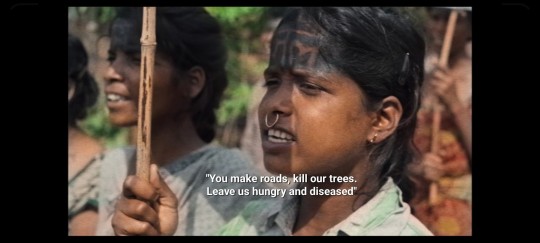


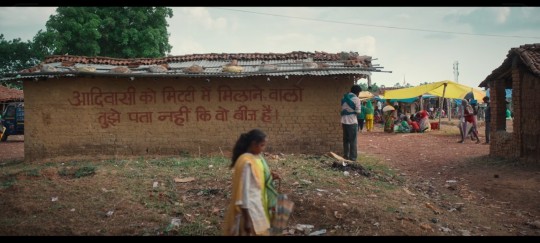


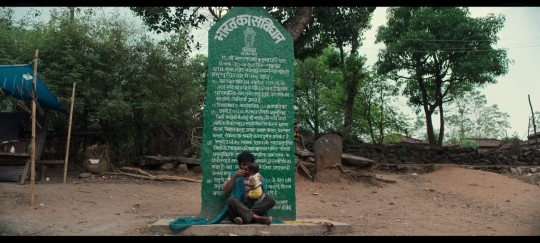
0 notes
Text
JORAM MOVIE-::::
Release-:
The film is scheduled to be theatrically released in India on 8 December 2023.
Critical reception-:
Upon its release, the film received positive reviews from critics, who praised Bajpayee's performance, the film's direction, and its suspenseful plot. The Times of India gave the film 4 out of 5 stars, calling it "a gritty and gripping survival thriller". The Hindu gave the film 3.5 out of 5 stars, calling it "a well-made and engrossing film". The Indian Express gave the film 3 out of 5 stars, calling it "a suspenseful and thought-provoking film".
Box office-:
The film was a commercial success, grossing over ₹100 crores (US$13 million) at the box office.
Awards and nominations-:
The film received several awards and nominations, including:
Filmfare Awards South-:
* Best Actor: Manoj Bajpayee
* Best Supporting Actor: Zeeshan
Ayyub
* Best Director: Devashish Makhija
* Best Screenplay: Devashish Makhija
* Best Background Score: Sandeep click here read morehttps://blogging1040794.blogspot.com/2023/11/joram-new-movie.html

0 notes
Text
Zee Music doing some weird ass sh*t on Spotify........... literally every Bollywood album i have in my playlist that's licensed to them is still gone (handful of tracks have popped back up under Various Artists. including Kala Chashma i feel like i should mention that). Sam Bahadur, having been released yesterday, is somehow available for streaming. how does this work
#film: sam bahadur#sam bahadur#vicky kaushal#sanya malhotra#fatima sana shaikh#neeraj kabi#govind namdev#mohammed zeeshan ayyub#bollywood#local gay watches Bollywood.txt#i'll be f*cked if it isn't a good album tho. genuinely good album we got Sonu????? Shreya????? Sunidhi????? think Itni Si Bat is my fave#rn but that's just bc it sounds like an old Bollywood song. or just old Indian cinema in general the vibes are giving Ee Mounam#(hello Tollywood mention!!!!!). that's the first thing i thought of#someone at Zee is a S-E-L fan that's the only thing that explains this. and ykw they're right you should be one#i just need that fan to convince them to bring the rest of the catalogue back we are languishing here
5 notes
·
View notes
Text
A rogue or a hero?
Starring: Rajkummar Rao, Mohammed Zeeshan Ayyub, Tigmanshu Dhulia, KayKay Menon, Prabhal Punjabi, Prabhleen Sandhu
Directed by: Hansal Mehta
Genre: Biographical/Drama
“Life’s most persistent and urgent question is , what are you doing for others?”
Martin Luther King Jr.
It has been 15 years since the terror attacks rocked the city of dreams, Mumbai. 166 people were killed in the what was…

View On WordPress
#anti-terrorism#celebrating men#fightagainstinjustice#Hansal Mehta#justice#Kay Kay Menon#lawyer#National Award#POTA#RajKummar Rao#Shahid Azmi
0 notes
Text
Scoop
Scoop (Serie 2023)
#KarishmaTanna #MohammedZeeshanAyyub #ProsenjitChatterjee #HarmanBaweja #TannishthaChatterjee #DevenBhojani
Mehr auf:
Serie Jahr: 2023-
Genre: Biografie / Krimi / Drama
Hauptrollen: Karishma Tanna, Mohammed Zeeshan Ayyub, Prosenjit Chatterjee, Harman Baweja, Tannishtha Chatterjee, Deven Bhojani, Tanmay Dhanania, Inayat Sood, Sanat Vyas, Ira Dubey …
Serienbeschreibung: Jagruti Pathak (Karishma Tanna) arbeitet als Journalistin für eine indische Nachrichtenredaktion. Als ihr Kollege Jaideb Sen (Prosenjit…

View On WordPress
0 notes